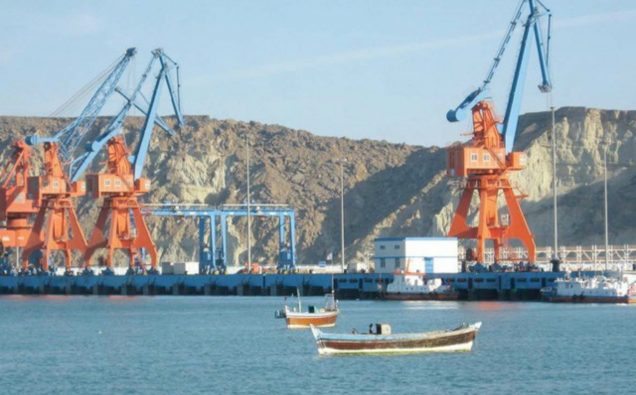
Gwadar deep seaport, Photo: Umargondal/Wikimedia Commons
A century ago, the people of North and Latin American continents had no road links. They had to travel even to the neighboring countries by sea. But the construction of Pan-America Highway by the middle of the 20th century connected the countries located in the Western hemisphere, and with opened news trade avenues.
The Pan-American Highway is a network of roads measuring about 30,000 kilometres (19,000 miles) long. The road links almost all of the Pacific coastal countries of the Americas in a connected highway system. According to the Guinness World Records, the Pan-American Highway is the world’s longest “motorable road”.
Passing through Argentina, Bolivia, Chile, Colombia, Costa Rica, El Salvador, Guatemala, Honduras, Mexico, Nicaragua, Panama, Peru, Canada, and the United States the road has boosted the land-based commerce in this part of the world in unprecedented ways.
In Asia and Africa, the pace of improvement in the regional connectivity has been very slow process in the last several hundred years.
Now, China, which reached out the world through ancient Silk Road is back in the lead to have a reliable infrastructure that may ensure a smooth flow of two-way commerce for its huge economy.
Chinese President Xi Jinping introduced the Belt and Roads Initiative or One Belt One Road program.
The initiative is expected to have an even greater impact than the Pan America Highway on the world connectivity, especially bringing in the landlocked nations of Central Asia.
The US $ 60 billion, and growing, China-Pakistan Economic Corridor (CPEC) is a key part of the One Belt One Road program. Some experts have called it a modern day Suez Canal that would link the backward Western China to the less developed South-Western Pakistan.
China has entered the global arena aggressively with a major focus on the nations to its west. These include Pakistan, Afghanistan and the Central Asian republics. Beijing is makeng massive investments in these countries. Nearly half of the investment is going into the China-Pakistan Economic Corridor. About half of that amount will be spent in the landlocked Central Asian state of Kazakhstan.
“Beijing plans to spend as much as a trillion dollars in more than 60 countries over the next decade and a half with an objective to develop land-based commerce,” says former Vice President of World Bank, Shahid Javed Barki.
The project has further deepened the relationship between Pakistan and the United States.
According to a recent report of the Lahore-based Institute of Public Policy, for both China and Pakistan, making the CPEC a central component of the BRI is of great significance as both the countries have enjoyed cordial relations for over 65 years.
A difficult phase in Pakistan’s difficult relations with the United States may be drawing the two states even closer. The CPEC has helped Pakistan to develop many missing links in the infrastructure in areas of power generation an communication.
China is tapping a cheap Pakistani labor for manufacturing of goods. This may result in the re-location of industrial units to Pakistan, like the way Beijing has already taken its industry to the countries such as Vietnam.
China is also aware of the mineral and energy riches available in the five countries of central Asia, Afghanistan and South Western Pakistan. Beijing has already started a project in Afghanistan to mine an iron ore. The work associated with the BRI is moving ahead steadily in Pakistan.
The Gwadar Port in South Western Pakistan has already become operational with cargos reaching the Pakistani terminals of the CPEC from China and facilitation of onward shipment of these goods to the Gulf states.
This way, a land-based commerce is taking new shape in this part of the world, promising a reasonable revenue for Pakistan in the form of transit fee and taxes. Pakistan-China cooperation in the field of land based commerce become a precedent for the India-Pakistan and Pakistan-Afghanistan trade relations.Currently, the trade between Pakistan and India has come down to the lowest ebb due to skirmishes on the Line of Control in the disputed Kashmir territory. Even small trade between the two neighbors is mostly taking place through third countries. Goods from India or Pakistan are first sent to Dubai or Singapore by sea or air before being re-exported to Karachi or Mumbai.
The major victim of such a trade is the consumer who has pay twice for the commodities that could be much cheaper if transported through Wagah land route.
While the CPEC holds out tremendous promise for trade among regional countries, the full potential of this project depends on peace and stability in Afghanistan and Pakistan-India relations.
India may be able to gain from the CPEC if it is able to address its own self-created opposition to the project. If it remains stuck in its zero-sum game, it may lose because other nations in the region have already signed up for the project. Several Western countries have also shown interest in being part of the investment opportunity.
The United States may also benefit from the CPEC because any prospects of peace after an Afghan reconciliation would require massive economic support for Afghanistan, and by being part of the project, Kabul would be able to create jobs for its its people.




![By Anthony Maw, Vancouver, Canada (Own work) [CC BY-SA 3.0 (http://creativecommons.org/licenses/by-sa/3.0)], via Wikimedia Commons](https://www.viewsnews.net/wp-content/uploads/2017/04/Sost_Pakistan_Customs_and_Chinese_Trucks_IMG_7494_China_Pakistan_Karakoram_Highway_KKH-1024x683.jpg)











